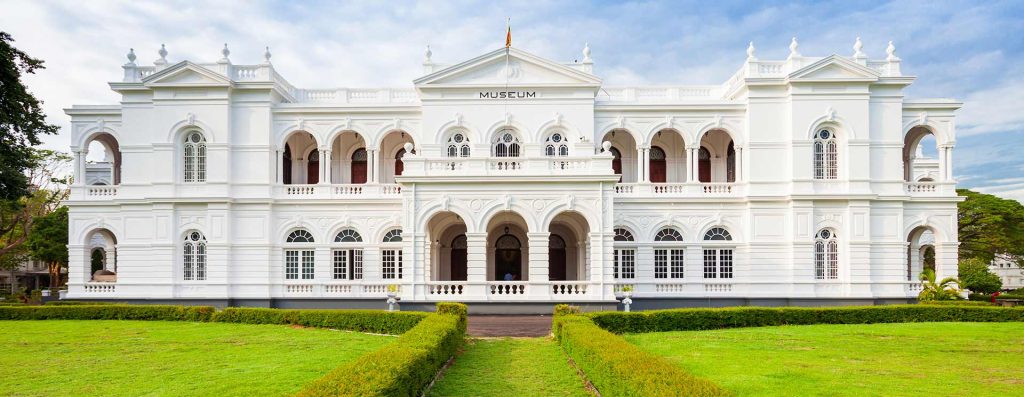The Colombo National Museum, also known as the Sri Lanka National Museum, is the largest and most prestigious museum in Sri Lanka, offering a deep dive into the island’s rich cultural and historical heritage. Established in 1877 by the British Governor Sir William Henry Gregory, the museum is located in the heart of Colombo and has become one of the city’s most visited cultural landmarks.
The museum’s grand white colonial building, with its distinctive Italian architecture, is a testament to its historical significance. Inside, the museum houses a vast collection of artifacts that span over 2,500 years of Sri Lankan history, from ancient kingdoms to the colonial period and beyond. These artifacts provide invaluable insights into the island’s diverse cultural evolution, religious history, and artistic achievements.
One of the most notable exhibits is the gallery dedicated to Sri Lanka’s ancient royal regalia, including the crown and throne of the last king of Kandy, Sri Vikrama Rajasinha. These relics give visitors a glimpse into the grandeur of the Kandyan Kingdom and its importance in the island’s history. In addition, the museum contains a remarkable collection of ancient sculptures, including stone and bronze Buddha statues, showcasing the island’s deep Buddhist roots.
The Colombo National Museum also features a rich collection of ancient manuscripts written on palm leaves, which detail various aspects of Sri Lankan life, religion, and governance during ancient times. The museum’s collection of traditional masks and intricate carvings reflects the vibrant and colorful folklore of the island, offering a unique look into its artistic traditions.
For those interested in natural history, the museum also has an impressive display of Sri Lanka’s flora and fauna, including taxidermied specimens of indigenous animals, such as the Sri Lankan leopard, elephants, and birds. This section of the museum highlights the island’s incredible biodiversity and the importance of preserving its natural heritage.
Visitors to the museum can also explore the country’s colonial past, with exhibits that detail the Portuguese, Dutch, and British influences on Sri Lanka. The impact of colonialism on the island’s architecture, trade, and social structure is vividly displayed, providing a comprehensive view of the island’s journey through different eras.
In addition to its permanent exhibits, the Colombo National Museum frequently hosts temporary exhibitions, cultural events, and educational programs aimed at promoting Sri Lanka’s rich cultural legacy. The museum’s tranquil surroundings, complete with lush gardens, offer a peaceful retreat in the bustling city of Colombo, making it a must-visit destination for history buffs, art lovers, and tourists alike.
The Colombo National Museum is more than just a repository of artifacts; it is a gateway to understanding the history, culture, and traditions of Sri Lanka. A visit to this iconic museum allows travelers to experience the story of the island, from its ancient beginnings to its modern-day identity.

